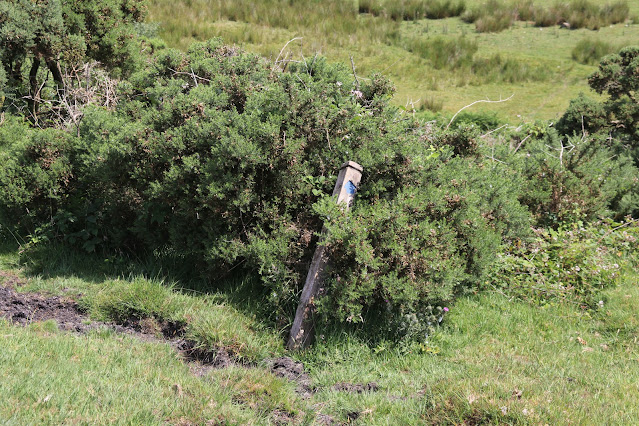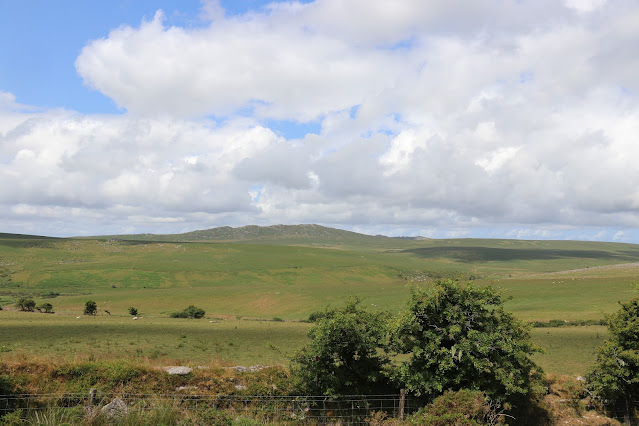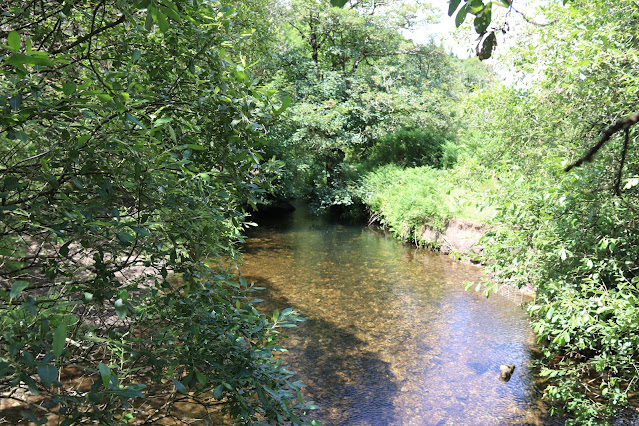 |
| In the distance was the elongated ridge of Brown Willy. Our recent walk up there from the other side took us up to the highest spot on the right. |
 |
| Sometimes footpath markers are rather ambiguous. Taken at face value, this one directs you through the clump of gorse. Not a good move. |
 |
| Looking down the valley at the bottom of which runs the River Fowey. |
 |
| A not particularly good shot of a Mistletoe Thrush. It looks like it was shedding some of its feathers - perhaps getting rid of its breeding plumage? |
 |
| Just simply a field of very contented cows enjoying the sunshine. A lovely scene. |
 |
| Ignore the ribbon of the A30, this view shows a large part of our walk. We basically went from left to right, but didn't reach the heights of The Beacon on Hendra Downs. |







No comments:
Post a Comment